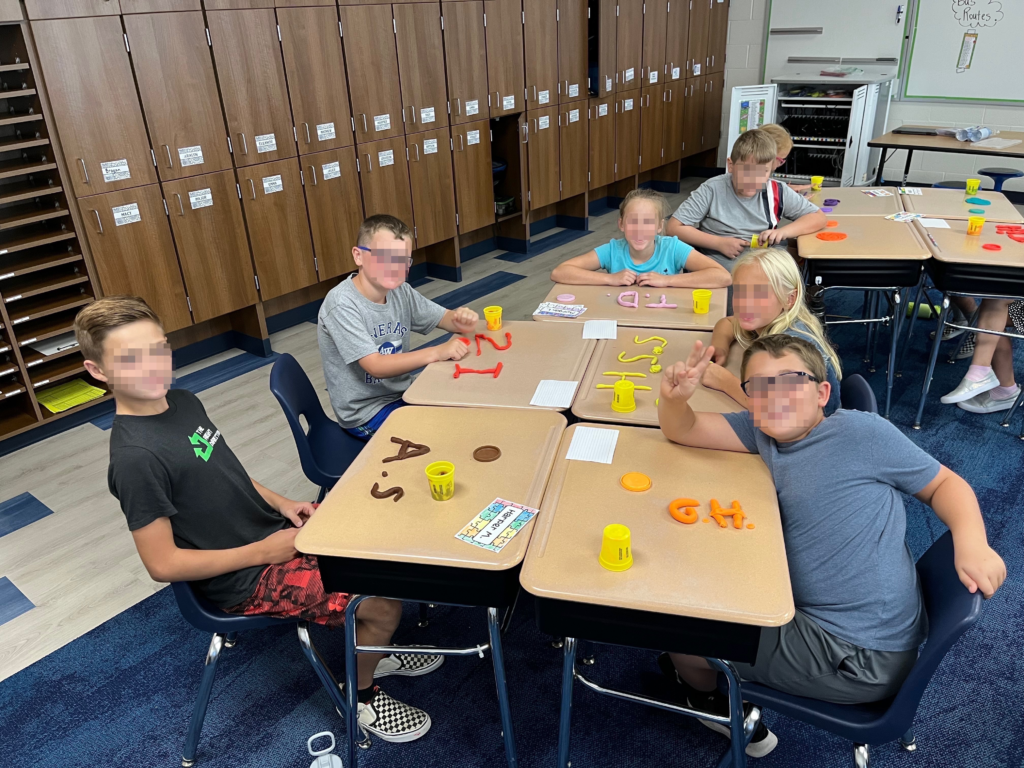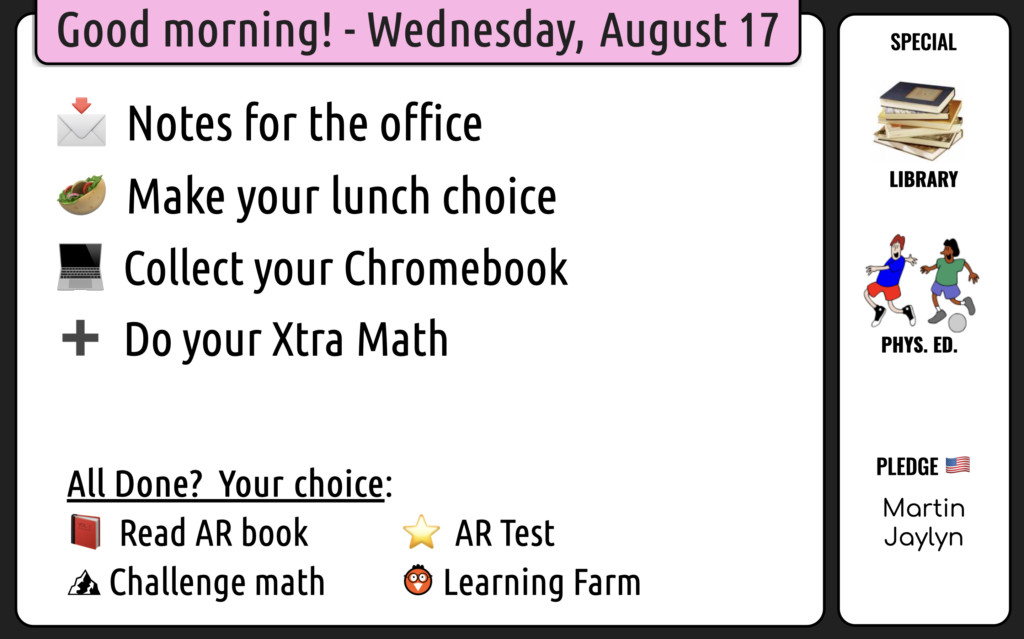The beginning of a new school year is an exciting time for both teachers and students. As educators, one of our primary goals is to create a positive and inclusive learning environment where students feel safe, supported, and connected. Building a strong classroom community from the very start plays a crucial role in fostering a conducive atmosphere for learning, collaboration, and personal growth. In this blog post, let’s explore some effective ways to build classroom community at the beginning of the year.

Icebreakers
At the start of the year, students may not know each other well, which can lead to shyness and hesitation in participating in class discussions or group activities. Icebreakers and team-building activities are a fun and engaging way to help students break down barriers and form connections with their peers. These activities can be as simple as “Two Truths and a Lie” or more interactive, like group challenges or scavenger hunts. By fostering teamwork and cooperation, these activities promote a sense of community and trust among students.
Playdoh
This is often the first activity that I have students do on the very first day of school. I have found this is a particularly calming, low anxiety activity that the students always enjoy. I give each student a container of Playdoh and then give them design challenges to make:
- their first initial
- something that represents your favorite thing to do
- their favorite food
- your favorite animal
- something you did this summer
- an emoji showing how you feel about school starting

Scavenger Hunt
Here is a classroom scavenger hunt I use on the first day to get students up and out of their seats and talking to one another. Students try to find as many students as they can to fit each category and the ask that person a related follow-up question.

Soup, Salad or Sandwich?
This is a non-traditional icebreaker activity which can really get the kids talking. It works great as an ice breaker because it does not require students to reveal anything personally about themselves.
It starts with the agreed premise that all foods that include 2 or more ingredients can be classified as a soup, a salad or a sandwich. You then give the kids a list of foods and have them discuss and agree in teams what they would classify each as. They can then elaborate on what criteria they used to sort each. Here could be some examples:
How would you classify? Soup, salad or sandwich? It makes for fun debate!
Click here to make a copy of a soup, salad, or sandwich google slideshow.



Get to Know Activities
It is important to give each student the opportunity to introduce themselves to the class, highlighting their interests, hobbies, and aspirations. This exercise not only helps students get to know each other but also encourages empathy and understanding within the group. It can also provide insights for you as the teacher, enabling you to tailor your lessons to students’ interests and strengths. Here’s a couple different activities that I have done over the years.
T-shirt bulletin board design (Click here for a FREE copy)

I like this activity because it is easy to send home before school starts and have students bring in the first week. It also makes a super easy bulletin board that I keep up in the hallway for the first quarter of school.
“Me” Bag
Another fun get to know activity is for students to bring in a “me” bag the first week of school. I tell students that their bags should be a small lunch sack size that contains 5-7 items that tell me and their classmates a little bit about them. I encourage students to use their imagination when choosing their items. For example, one student who liked to tell jokes brought in a small rubber chicken. A student who liked to fish might bring in a lure. Anything they bring is okay as long as it is school appropriate and isn’t too large for their bag. For some examples, student bags can include items such as map of places they’ve traveled, pictures of pets or family, a favorite book, a logo of a favorite sports team, trophies from sports or performances, things they collect as a hobby, etc.

While students share their bags I usually jot notes on an index card that I have for each student that has their name and picture. I also use this to practice memorizing everyone’s names.
Name Games
Confession, I stink at learning names. I don’t know why. Nonetheless, memorizing all of your students’ names is a super important task to work through during the first days of school.
One classic memory game I like to do is have the students say their name along with another word that starts with their first letter. For example, “Energetic Erica” or “Brave Brison.” Then we go around the room and slowly add each student’s name and nickname. The last person is challenged to say everyone’s name and nickname. By the end, most students will have learned everyone’s name and you’ll (hopefully) have them down, too.
Another name game that my 4th graders love last year was to sing, “Who stole the cookie from the cookie jar?” At first I thought this old camp song might be too babyish for 4th grade, but they love it. It gets everyone smiling and engaged. I was surprised that none of them even knew it.
Morning Meeting
Our school uses the Responsive Classroom system where each day begins with a Morning Meeting. These are great opportunities to get to know your students better. My daily routine is to do a whole class greeting, a sharing question, and then a whole class team building activity. We do this each day.


Connect with Families
We usually hold an Open House (Meet the Teacher Night) before the first day of school. This is a great time to meet the families, often including siblings. Our Open House is very informal, just a chance to say hello and drop off supplies mostly. At this time, families take home a folder of welcome paperwork. One of the most important items in this folder is the parent survey. See the free copy of the letter I send home with families below:

Class Dojo
In our school we connect to families using Class Dojo. I love the messaging and and class story features in Class Dojo. This is awesome for keeping families up to speed on what we’re learning at school. I take lots of pictures during the first weeks of school and share those with families.


Team Building
I tell the students that we will start with a lesson on what it means to be a good teammate and then there will be a test. When I teach about teamwork, I a couple examples. The first is an analogy of rowing a boat. I talk about how we all need to be rowing in the same direction and the same pace to be successful. We need to communicate (Stoke! Stroke!) I ask, “Why would we use four people to row a boat?” (It’s much faster and easier) What happens if we are not rowing in the same direction, or at the same pace, or if we aren’t communicating?” (We may go in circles or not at all.)

Another example I use is with my band. I talk about the importance of each member playing the right song, in the right key, at the right tempo. I ask, “What would happen if each member of the band started playing different songs, at different tempos, in different keys?” (It’s not going to sound good!)

Then I introduce them to a slide with the acronym T.E.A.M. (Together Everyone Achieves More)

Now it’s time to test what they learned. This is called the 💪 arm wrestling challenge. I pick two volunteers who look like they have relatively even strength to come up and arm wrestle. Here’s the rules: for every “pin”, the pinner gets one small piece of candy (like an M&M or a Skittles). The match will only last 15 seconds. So the more pins, the more can you get.
Usually the first two students are at a relative stalemate, and therefore neither gets any candy. I announce, “The lesson was not learned. Let’s try again, can I get two other volunteers?”
I call up two students again, and I usually get similar results with sometimes one student getting a few pieces of candy.
I ask the class, “What was the lesson, again? That together, everyone achieves more.”
I usually takes a few rounds, but eventually two thoughtful students usually figure out that they can let each other be pinned much faster than fighting against their opponent to try to “win.” The group that figures this out first I usually give a whole bag of candy.


Classroom Procedures and Expectations:
It’s not particularly fun, but on the first days of school, it is essential to practice important routines and procedures. Some are required to go over such as fire drills, bus dismissals, and playground procedures. Others are individualized to your classroom and style.
I usually make a slideshow of these things just to remind me of everything I want to go over. I don’t push too hard on this because my main goal for the first few days of 4th grade is to have kids excited about coming to school and the learning we will do. The procedural lessons I will sprinkle in over the first couple weeks and we’ll take time to review the important ones daily. I tell all students that these are the two important most important procedures to get their day off to a great start as they walk into our classroom:
- Greet your teacher in whatever way you feel comfortable.
- Read the board for morning messages and reminders.

Conclusion
Building a strong classroom community at the start of the year is an essential foundation for a successful and enjoyable start to your school year. By incorporating icebreakers, connecting with families, team-building activities, and reviewing classroom procedures, teachers can create a positive and inclusive environment where students feel connected and valued. Encouraging student involvement and fostering social-emotional learning further enhances the sense of community, ultimately contributing to academic growth and personal development throughout the school year.
What are your favorite beginning of the year activities? I’d love to hear about them!




